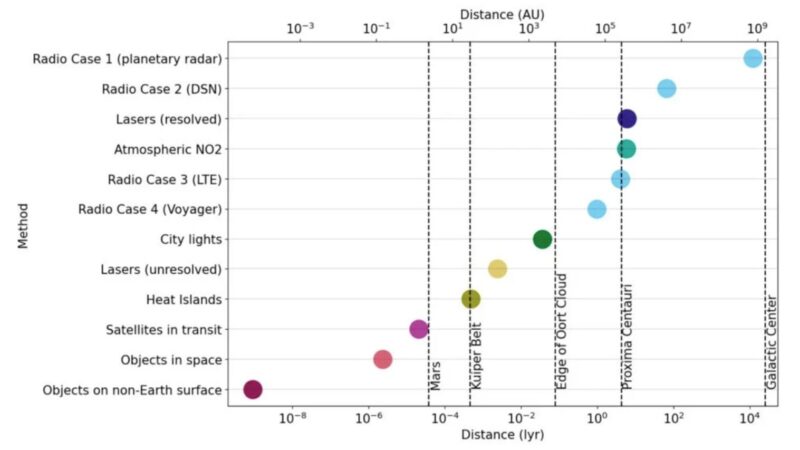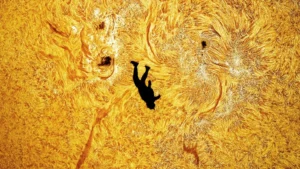If an alien civilization exists and has technology similar to ours, could it detect human life on Earth from a distance? If so, how close would it need to be?
Recent studies from the SETI (Search for Extraterrestrial Intelligence) Institute explore these questions in the hope that they may in turn help us detect alien life.
Researchers, led by Sofia Sheikh, have been examining various “technosignatures” — indicators of advanced technology — to understand how visible our planet might be to alien observers. They believe radio transmissions, particularly those from planetary radar systems, are the most detectable.
The powerful radio wave could be observed up to 12,000 light-years away. This means that a distant alien civilization with technology like ours would be able to identify Earth as a planet with an advanced civilization.
“Our goal with this project was to bring SETI back ‘down to Earth’ for a moment and think about where we really are today with Earth’s technosignatures and detection capabilities,” said co-author of the study, Macy Huston. “In SETI, we should never assume other life and technology would be just like ours, but quantifying what ‘ours’ means can help put SETI searches into perspective.”
Pollution is the 2nd most visible sign of humanity
Ironically, the next most detectable technosignature after radio waves is atmospheric pollutants. Markers of industrial activity, such as nitrogen dioxide (NO₂), are emitted from our atmosphere and can be detected up to 5.7 light-years away. To pick up such emissions, extraterrestrial civilizations would need telescopes as powerful as the James Webb Space Telescope and the upcoming Habitable World Observatory.
As the hypothetical alien observers approach closer to Earth, more and more signs of life would be detectable. City lights from urban areas and the thermal signatures of cities become visible. Advanced extraterrestrial telescopes could even detect satellites and space debris orbiting the Earth.
These many signals make Earth’s civilization fairly visible to anything out there that is looking for signs of life.

The maximum distances for detecting Earth’s various technosignatures. Image: SETI Institute
Understanding Earth’s technosignatures also guides our own search for extra-terrestrial life. By identifying which signals are most detectable, researchers can better anticipate what to look for on exoplanets. This approach enhances the strategies employed in SETI, potentially bringing us closer to discovering intelligent life beyond our planet.






